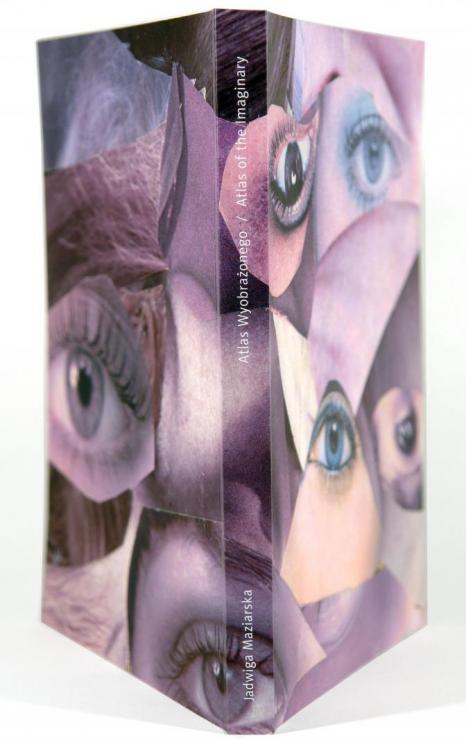A Paralysing Encounter
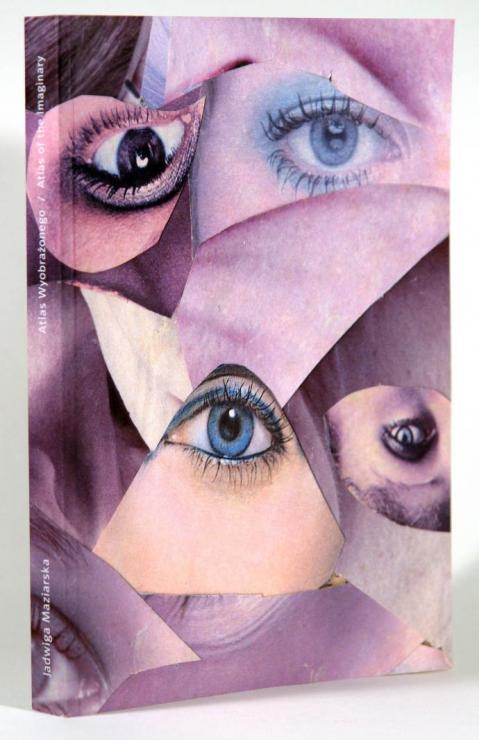
In the late 1990s, a time of heated discussions of modern art and its avant-garde tradition intensified by the new political situation, Jadwiga Maziarska's paintings were sometimes referred to as Unistic. The artist herself was not certain of the correctness of this reference nor did she comprehend it. When she confronted Tadeusz Kantor, he admitted to coining this reference but was unable to give the grounds for it and confirmed that Warsaw art critics hastily adopted this epithet, unclear as well as pejorative 1 in Kantor's opinion. A better-grounded discussion of Maziarska's painting and its Unistic nature developed between Krzysztof Teodor Toeplitz who reviewed the 2nd Exhibition of Modern Art in Nowa Kultura2 and Jerzy Ludwiński who dedicated an article to the painter in Krakow's Życie Literackie. 3 The former reviewer regarded Maziarska's unism an aborted return to the impressionist experience of pure visuality, a picture enclosed in the eye of the beholder while Ludwiński perceived Maziarska's unism as merely a formal pretext for depicting a psychological expression unknown to Strzemiński. 4 Indeed, it was difficult to limit Maziarska's art to a game within the actual painting and its non-transparent surface, inaccessible to extra-painting sense, as acknowledged by the reviewers. At the same time in this self-imposed rhythm of the shapes on canvas, repeated elements and the fabric's material nature it was difficult to ignore the painter's focus on purely sensual sensations of the eye wandering in the painting's enclosed area.
The artist experienced in herself the visible ambiguity bearing all traces of a significant split in the structure of Maziarska's painting, although she perceived the pulsating scar of the surface as something different. In an interview, asked about the important issue behind her stearin reliefs she said that they were about "the inner energy of matter spotted in the psychological space and confronted with the substance's material nature." She added that they were not "imitations of anything real although one might say that the splits as demonstrated in the then paintings represented the structure of the original matter or some tremor similar to reality." 5
In other words, Maziarska was certain that the visible in a painting's matter comprised more than "pure visuality," it was something hard to name and to which the artist referred to as tremor (trembling). It is no coincidence that this reference, anything but unambiguous, would open up a whole array of synonyms like vibrating, oscillating, surging, approaching and receding, owning and excluding. By this token, the tremor (trembling) represented the incompleteness of the picture appearing on canvas. A trembling image would blur, revealing it would conceal its fragmentary nature, concealing it would bring out certain fragments. Let me limit myself to stating that the opticality of Maziarska's works would go beyond object-owning optical visuality, including also what is hard to capture in a glance albeit existing in it like Benjamin's aura in "works of art in the age of mechanical reproduction" or, better still, in compliance with the author's terminology, what lies beneath optical unawareness.

A lot has been said lately about optical unawareness (different from pure unawareness because of a historical shift); the impressive coverage should not, however, be attributed to Benjamin but rather to Rosalind Krauss. In her divagations about the modernist awareness being the foundation of the formalist avant-garde, with its logic of universal perception as the mode of learning and constructing the world, with its artistic pureness of the ground determining the conditions of a picture's autonomy, the critic turned to an alternative history of 20th century modernist circles. She turned to the history of artists entangled in the modern yet going against the current of, as she would mention on numerous occasions, modernist opticalism founded on the epistemological basis of the visual. Bearing in mind the tradition of iconoclastic heresy (i.e. presenting the unpresentable) and distrusting Cartesian's eye of reason (i.e. awareness as the source of presentation), in an analogy to Freud's psychoanalytical interpretation of a dream, Krauss would look for significant features of incomplete visibility, she would follow the concealed movement of desire in a painting's split. Krauss would devote her divagations to works by Duchamp, Giacometti, and surrealists as well as Max Ernst. 6
It is not my intention to make any analogies between Maziarska's painting and that of the above mentioned artists, although the surreal thread present in her paintings, identified by critics and Maziarska alike, is a reason for taking a closer look at the visual subconscious playing an important role in the artist's painting construction. Bearing in mind that Maziarska's works were deeply rooted in the avant-garde experience the formalist interpretation of which would for a long time be in Poland the basic reference to all pioneers (primarily in the 1960s, i.e. when the artist's works assumed a special distinction), finding in her art elements foreign to this canon will necessitate a description of Maziarska's modernism. This was a type of modernism relying on more than just optics as the only sense to which the art of painting should refer but also relying on the painting platform as an exceptional field characteristic of this form of expression. 7 The perspective defining modernism, well-grounded in Poland and important to this dissertation, dated back to the impressionist understanding of the eye's physiology and ascribed to this rational carnality senses, going far beyond vision's sensory tangibility, ensuring that a rational (intuitive) subject plays a special role in learning and creating the world. 8 "I would always build" said Maziarska. "I am much more involved in the entirety of existence by finding constructions. I have a feeling that I co-construct the whole world... Even now when I resort to the colour, the paint does not shed its material, construction-related features. In my opinion an artist, even one very sensitive to simple sensuous qualities, should not copy patterns from the external world but rather discover new structures, follow them, scrutinize them and prolong their existence in the objective world of artistic objects by his or her attendance." 9
Despite its span over 50 years, Maziarska's painting, "turning the subjective into the objective," enjoyed a degree of unchanged plastic relations consisting in smooth and somewhat pulsating copying and adjusting similar forms contributing to animated, forked and intertwined shapes in line with "some internal rules of the existence of natural organisms." All Maziarska's works demonstrate a certain biomorphism of matter first apparent in the vital luminescence of colour compositions from the turn of the 1940s, later on in the construction of carnal dullness of waxed surfaces (the 1960s) and in the 1980s reflected in the "discovered and maintained traces" of a hand wiping off a brush or in the "abstract nature of the space" of human imagination, enshrined in paint. Maziarska would explain that painting's interest in such defined sensory matter triggered off "looking for the reasons for its existence which inspired searching for equally deeply concealed motivations in myself and the resultant autonomous acts. All this is not easily susceptible to analysis and not easily revealed... I think that human destiny is related to the unreachable recesses of the universe with its organization of ever revolving particles concentrating in various formations and collections of different quality but sometimes individually active, moving to their own rhythm, releasing energy and making other structures' movements more dynamic. I also think that this material diversity at the same time represents fragments of thoughts scattered and concealed in the space. This includes the fact that every physical phenomenon contains a psychological phenomenon. Putting it differently: every object together with its shadow represents its duplicity, on the one hand forming a relation with Existence of a general character and its own content on the other." 10
Maziarska's biomorphism has a cosmic dimension; it was a search for biosynthesis. It went beyond individual carnality and, as was the case so many times in modernism, it crossed the universe with the spirituality of its mind to confirm the dualism of existence with a sense of victory containing estrangement and catastrophe. Contrary to partially experienced reality, it was about the utopia of entirety, available in "a glance," in artistic intuition and the gift of epiphany. Maziarska claimed that in an epiphany an artist reached the unrevealed, i.e. the recesses of the universe and the power of energetic rhythms. Epiphany is a special moment of absolute optical insight, a flash from some unrecognized primeval nature of an insubstantial structure aimed like an arrow to the future. During an epiphany, creation is for a moment released from reality; in the abstractness of epiphany art approaches its primitive source. Resorting to the notion of epiphany, Maziarska reduced seeing-awareness in a way characteristic of modernism to pure, blinding and timeless momentality. After all, it has been emphasized many times that the motionless explosion of abstract presence so typical of modernist avant-garde contained the notion of artistic freedom reflected in painting's pure transparency and self-knowledge., the form's extra-historic construction and the utopia of "the seeing theory." "I could say that I am from another Earth and that I defy local laws" said Maziarska. "I do not present the real variants of matter. I do not invent. I discover. I recognize construction. I paint because of an impulse, when I have an epiphany. Maybe I also defy the laws of time? After all, it is related to the Earth's rotation." 11
No extra proof is needed to show that Maziarska's thinking resulted from the deeply rooted tradition of modernity relying on the notion that in the experience of visual entirety "we discover not only ourselves but also the order of all being" materialized in a work of art. This definition of a modernist materialization of a transparent canvas in the Universe would strip the painting of its abstract fiction of illusion and would transform the utopia of painting into existential truth. It is hardly surprising then that Maziarska referred to the internal rule of the artist's morality as "the order of obedience to artistic impulses." 12
However, a closer look at the painter's works reveals too many uncertainties to allow us to cease explanations. In is not my intention to solve the uncertainty in this brief dissertation; rather I want to merely highlight the already mentioned split as the fundamental problem of Maziarska's painting. Modernist entirety does not allow for any split; wherever it appeared, its source must have been elsewhere. "Paintings are discreet about the unutterable" said Maziarska at the end of the interview so frequently quoted here. "I keep emphasising the discreet nature of painting... I have a feeling that it is painting's very important feature." 13 The artist's considerations are full of the notion of paintings containing something inexpressible, unutterable and in fact unpresentable. An artist acts in the realm of the invisible, the unnamed and irrelative - she would often say. This is art's secret.
Maziarska's painting technique contained another part, concealed differently and never mentioned by the artist. No published notes, letters, conversations or interviews by 199814 when she was already 85 contained her declaration and her atelier never revealed the fact that since the end of the 1940s her abstract painting had relied on figurative photographs or collages of photographs, very simple pictures based on photo montages. Her general and unconcealed interest in photography (stereoscopic imaging, film, magazine reproductions, colour postcards, book illustrations) was aimed, according to the artist, at "maintaining the freshness of imagination," a natural need for the exotic, knowledge, information or in general the desire to immortalize "the picture of the world." She would remain silent about transposing photographs onto the picture.
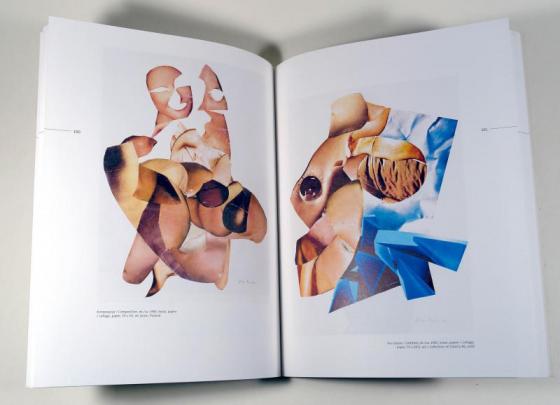
The direct relation between photography, photo montage and Maziarska's painting has been discussed in detail and in a very interesting way by Barbara Piwowarska. She interpreted the artist's collection of reproductions as a mode of "collecting the world" while collecting itself was an attempt at modernist, i.e. subjectively owning and seizing the picture, "capturing what could otherwise be lost." 15 When dealing with Maziarska's technique, the author consistently treated subsequent photographs and montages thereof as figurative sketches of abstract paintings (the process of reduction and objectivization - universalization). According to Piwowarska, they allowed the painter to "include the outside world into her reality" and to "annex realness" by giving the outside world a new meaning. From the point of view of the sought for cohesion of Maziarska's paintings' philosophical and artistic theory and practice, Piwowarska was probably right, although she would say that Maziarska "subconsciously denied the existence of sketches." Again, Piwowarska was right in saying that in this denial, which in fact was a gap in the cohesion of the modernist system, Maziarska's photographs and photo montages, which would emerge like surrealist "miraculous icons," could have reached the very "creative fiat" of human creativity. "I find the truth about myself intangible" - Piwowarska would often quote this sentence from notes taken down by Maziarska in Paris. "It is the paintings that tell the truth. If I discovered the truth, perhaps I would not feel the urge to paint."
However, in her research Piwowarska abandoned this important track and believed the modernist painter that the two creative attitudes referred to by Maziarska: doubting in the world's reasonable proximity and building up the world upon the clarity of intuitive cognition, are very close on the level of imagination, similar to the related "structures of crystal planning" while, as the artist claimed at some point, the surrealists demonstrated that there was no "division between art and the secret of our existence. [...] Today it is about absorbing reality via imagination." 16
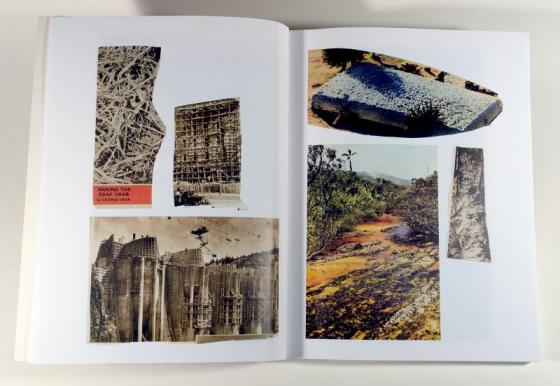
Let us pause at this train of thought, undoubtedly present in "the subterranean world" of Maziarska's works. I suggest taking a closer look at the rift in modernist cohesion referred to by the artist as a quiver "revealing cracks in the paintings" deeply rooted in the matter of the paintings themselves. I suggest contemplating the intangible oscillation of the unknown between the collected photographs and the paintings. What I mean is the question Zbigniew Taranienko asked the artist: "In your notes you used the phrase ‘the subterranean world' and expanded on it by saying that its familiarity is a fundamental mode by means of which humans communicate with the unknown as well as other humans - ‘suspect' as belonging to this world. What exactly is that ‘subterranean world'?" Maziarska replied with some embarrassment stemming from a misunderstanding: "All the time we kept talking about the waves flowing out of it..." 17
When watching Maziarska's reproductions and montages we have a sense of their heterogeneity. They share no cohesion either from the point of view of their morphology and typology nor the techniques and character of presentation nor the selection of themes and modes of seizing the world. Certain unevenly cut out clippings, sometimes jagged, stained, crumpled, pasted one on top of another, shifted, placed on carton boxes or left with the printed page. The impression they make is chaos not governed by any laws of selection, completeness or entirety. Their hierarchy, narration or order are hard to find; as if their emergence was purely accidental, un unknown coincident like a piece of paper found in the street or an unexpected letter from afar. It is comparable only with the phenomenon of extraordinariness concealing desires, obsessions, fetishes and fantasies hard to express. In my opinion Maziarska's collection is of dream-like nature, falling in place like a dream which, according to Freud, is a "picture puzzle." 18 By no means do I mean the sense of the traditional presentation of things differently as an inability to present logical relations in a fragmented structure and disfiguration. All the characteristics of a dream are represented in its chaotic lack of contradiction, the attempts to cover the tracks of sense, the labour of concealing the real. It is a picture emerging like a mystic riddle together with an imaginative form with the power of a negative of vanishing visuality. 19
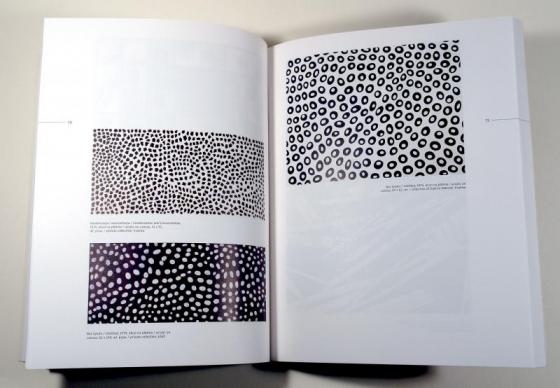
If we look in the above described way at Maziarska's picture collection, we will find room for it in the space of "the formation of unconsciousness" in the dream-like environment between the vacuum of the (reality) and the insubstantial matter of the screen of the canvas (the illusion of reality). We shall comprehend it as the direct source of Maziarska's ultimate dilemma between complete uncertainty of the visible and the comprehensible ("the economy of doubt" as Didi-Huberman would refer to it). It hovers in the vicinity of the heart of the matter of psychoanalytical unconsciousness as "knowledge unaware of itself." It hardly comes as a surprise that Maziarska asked to expand a sentence from her notes where she said that "everything exists owing to the external relations between Existence and its limit" which now can be interpreted as a question about the relationship between reality and its extremes in awareness and unawareness, the artist replied: "this is how I predominantly expressed my feelings. I cannot say anything more explicit." 20 After all, can you speak firmly about what tends to be rejected, non-existent in presentation and reality? Maziarska's photographs and photo montages form an indirect structure, some sort of a "holy picture" astonishing the artist with the rule of lack of contradiction of an entanglement of what is both real and unreal, presenting and unpresented, captured and concealed, coveted and unsaid. This definition of Maziarska's world collection, failing to be an archive of sketches for later paintings, has laid the foundations for the reference for her painting, remaining the workplace of a dream (Traumarbeit) which, satisfied with the transformation, transposition and concealment would turn towards art and reality alike because, as Jacques Lacan put it: "We need to look for reality beyond a dream, in what the dream has enveloped, wrapped and concealed from us except for lack of representation which is only replaced here." 21
Let me add that painting remains beyond the dream; I agree with Didi-Huberman's radical opinion that paintings are not dreams. "We do not encounter painted or sculpted paintings the way we encounter visual pictures of our dreams." Paintings surrender to our endeavours: we can freely shape them, alter, classify and store. Dreams are ephemeral objects, unsubordinated to us which tend to dissolve, recording only the remains of our fate, incomprehensive scraps of the subjective. Painting is aimed at people, uniting with them in a symbolic community. Dreams do not request to be understood, they simply appear. We tend to be excited when confronted with objects of art which ensure the clarity of vision (the way we "watch" the world in a perspective drawing) when in a dream we are immersed in our isolating gaze (the world "emerges", it exists in our eye while I exist in a painting). 22 Nevertheless, there is no radical break-up between seeing and looking; rather, they are two sides of the same sight pyramid. Their intersection marks the painting screen with its schemes of representation and culture codes, a venue of negotiation between the deceiving eye (le trompe-l'œil) and the look (le dompte-regard) whose unbearable presence needs to be tamed. This is a place of a gap and a break. Seeing is torn apart between glancing and watching, between presenting (the illusion of presence) and introducing itself (with its own presence). This dilemma places before our eyes what it presents as a reminder and anything that introduces itself, the visual event of a painting as a work of art as oblivion, as Didi-Huberman put it. In order to understand painting this way we need to treat the surface of a painting in a dynamic way. Not as much as a material fossil of the formerly existent senses but rather as open and ripped, full of cracks and slits, the object of a time-consuming and never ending process of creative negotiations where the visible is intertwined with the invisible, the conscious with the unconscious. It is a platform of traces, scraps, remains, fragments which always combine (albeit not complementing each other) with something else: already diluted pictures, displaced quotations, foreign languages, still vivid impressions.
Viewing Maziarska's paintings from this perspective in relation to her photographs and montages, one can identify a play on incoherence where rejection and exclusion are at stake rather than annexing or complementing. In this view, abstract art will be neither a synthesis nor a reduction, absolutization or substantiation of a figurative matrix but rather warding it off and distancing while working on the painting surface is about blurring and as a result of concealing a photo frame. Therefore Maziarska's works present us with the phenomenon of double exclusion, the former taking place on the level of dream-like photographs which retain the arrangement as a representation of inaccessible reality ("I can see oceans via fish tanks" - wrote Maziarska in her letter to Erna Rosenstein). 23 The other exclusion pertains to painting whose abstract nature conceals figuration in order to "absorb reality" ("it is about absorbing reality by means of imagination" - this is Maziarska's statement already quoted in a different context). As if delight related to watching the form of a photograph separating pictures from the world competed with the unsettling experience of bringing the world into existence in painting matter. Putting it more simply, the dialectics of these processes in the perspective of awareness would be rationalizing entirety and infinity while in unawareness it would be reflected as a desire oscillating between a vacuum and death.
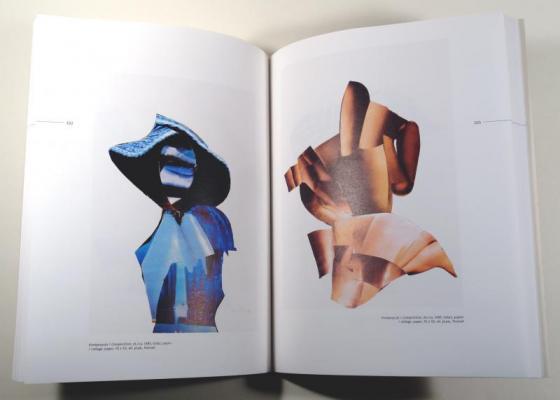
Obviously, exclusion is also of a historical nature; in the case of artists who survived WWII and the Holocaust as well as those who lived during the Stalinist regime, the exclusion of reality should also be interpreted as a defensive reply to a trauma, pushed back into unconsciousness and rejecting the reality of presentation from their paintings. This does not explain the complexity of the artist's political entangling; however, it is yet another reason to speak about abstract painting with respect to exclusion in the face of specific reality. We should bear in mind that the processes of exclusion take place not only within a picture encased with a frame; the frame itself is a frame of exclusion while its area is the activity of ideological construction. 24 In Maziarska's case the issue of wartime trauma necessitates a separate train of thought very likely to shed more light on the political entanglement of the modernist model in its creation.
When preparing the photographs for a painting, Maziarska would cover them with a mesh of straight lines, a framework well known in the tradition of perspective drawing ordering a geometric view on a transparent screen (a glass pane, a window) placed between the eye and the world. This structure allowed her to transfer a picture onto a surface very accurately and to create an illusion of natural space. Maziarska's analogous mesh imposed on unpainted canvases was a technical procedure to justify the recurrence of photographic reality in the painting's field. Yet there was more than that: it was an attempt at rationalizing vision, transferring the sense of the world from the photograph's chaos to a painting. It was a truly abortive attempt which in practice forced Maziarska to paint the framework over (except in several cases where she retained the linear scheme), to destroy the recurrence, to transform a linear figuration into a shapeless abstraction, changing the intention of owning (l'appropriation) photographic representations into an obsessive obliteration thereof to a point beyond recognition, concealing in the layered texture, pushing out of the field of sight, excluding from sense. If anything was left on the surface of the painting from the photographic shape, these were remains of a general outline, some traces of a lumpy texture. The transitional attempt was a full-blown failure as it assumed the logic of reason among intangible metaphors of photographs and montages thereof, among the dreams of the artist's rejected desires. Maziarska's works originated in this breakdown of the modernist awareness principle or perhaps in the work of art's dilemma persistent in its generality, in the incomprehensible quivering of form, the wavy movement into matter and from the heart of the unseen and presented on the surface with scraps of the rejected like "return of the Imagined."
A photograph or a postcard, wrote Foster introducing Jacques Lacan's terminology, depicts the Real as already absorbed in the Symbolic (encoded symbol); also a part of realistic painting. However, Foster promoted another way of reproducing reality consisting in reproducing a "liquid surface." Extrapolating this notion from painting abstraction rather than contemporary realism, I would say that the process of looking for a liquid representation in a non-representational picture is a return to the Imagined rather than stripping the Real of its reality. This procedure allowed to postpone the traumatic encounter with the Real and to stay on the relatively safe ground of the dreamy reality of suppressed desire. This by no means was a carefree attitude and it was certainly ideologically menacing. 25 Fortunately, in Maziarska's works it was utilized politically. We should bear in mind that in psychoanalysis the Representational order is the primordial non-diversification, a subjective-cum-objective as well as pre-linguistic unity, a state lost forever. In this sense, following a different trace but never abandoning Foster's reasoning, expressing a similar desire of directness and uniformity as well as experiencing a similar drama of presence, realism would refer to a substance-related vacuum differently than abstraction. While realism entered Symbolic order by means of trompe-l'œil and revealed with horror what it intended to conceal, abstraction attempted to incarnate itself as reality by severing the processes of illusion and encountered the death of a picture with equal horror, finding the only chance for its survival in maintaining the illusion of presence. Maziarska wrote: "A work of art as well as a fragment of human life would seem senseless if they did not present durability, the inexorable severity of laws as seen from outside and inside the structure of the Universe. This does not defy the related spontaneity; rather, it reveals itself in the intersection of its own desire and the Omnipresence despite insurmountable obstacles paralysing this encounter." 26
Maziarska states very clearly that artistic work brings together desire and reality, leading to a traumatic collision with "the vacuum enclosing the real." This is a "paralysing encounter" with an inevitable split tearing art apart by forcing it to see a different order, to emerge from different senses, to relate to different worlds. "Again and again, we are in a situation of an alienating choice" as Didi-Huberman put it. This is a choice accompanied by the most bitter alternative: knowing without seeing or seeing without knowing. "This way or other, it is always a loss. By choosing knowledge you only win the unity of synthesis and the obviousness of the reason, at the same time losing the reality of the object in the symbolic enclosure of a discourse fashioned in the likeness of its own image or rather of its own presentation. In the opposite situation, when we want to see or rather to look we tend to lose the unity of the enclosed world, ending up in an inconvenient openness of a liquid universe exposed to all the gusts of sense. Here the synthesis will become fragile before it falls apart; the object of vision, touched accidentally by a splinter of the real27 will separate the subject from knowledge, entrusting reason to a split of all things. The split will be the first word, the first approach at uttering the magic words of the history of art." 28
Jadwiga Maziarska. Atlas Wyobrażonego / Jadwiga Maziarska. Atlas of the Imaginary, Ed. Barbara Piwowarska, Centrum Sztuki Współczesnej Zamek Ujazdowski, Warsaw 2009.
Spis treści / Contents:
Ilustracje 3
Images 3
Barbara Piwowarska
Atlas Wyobrażonego 120
Atlas of the Imaginary 156
Andrzej Turowski
Paraliżujące spotkanie 122
A Paralysing Encounter 158
Andrzej Leder
Puszka Lacana 130
Lacan's Box 166
Agata Bielik-Robson
Only Connect! O filozoficznym sensie kolekcjonowania na marginesie twórczości Jadwigi Maziarskiej 132
Only Connect!
About the philosophical sense of collecting: divagations inspired by Jadwiga Maziarska's works 168
Dorota Jarecka
Od faktografii do faktury 136
From Factography to Factura 172
Anna Markowska
Nic nie jest takie, jak się wydaje 142
Nothing is what it seems to be 180
Jadwiga Maziarska
Notatki 146
Notes 184
Kalendarium 148
Chronology 186
Polish version: http://www.obieg.pl/teksty/14633
- 1. Maziarska's letter to Erna Rosenstein of 17 August 1958 in: Kolekcjonowanie świata. Jadwiga Maziarska. Listy i szkice [Collecting the World. Jadwiga Maziarska. Letters and Sketches], edited by Barbara Piwowarska, Warsaw, 2005, p. 88.
- 2. Krzysztof Teodor Toeplitz, "Awangarda w Zachęcie" [Avant-garde at the Zachęta Gallery], Nowa Kultura, 1957, no. 44, pp. 3-8.
- 3. Jerzy Ludwiński, Wystawa Jadwigi Maziarskiej [The Exhibition of Jadwiga Maziarska], Życie Literackie, 1957, no. 50 (supplement Plastyka, no. 16), p. 8.
- 4. Władysław Strzemiński (1893-1952) was a Polish avant-garde artist. During the 1920s he formulated his theory of "unism", published in: Unizm w malarstwie [Unism in Painting] in 1928 [translator's note].
- 5. Energia, materia i sztuka [Energy, Matter and Art]. An interview with Jadwiga Maziarska by Zbigniew Taranienko, in: Jadwiga Maziarska, edited by Józef Chrobak, Stowarzyszenie Artystyczne Grupa Krakowska, Krakow, 1991, p. 50.
- 6. Rosalind E. Krauss, The Optical Unconscious, MIT Press, Cambridge Mass., London, 1993.
- 7. Clement Greenberg, Obrona modernizmu [Defense of Modernism], Universitas, Kraków, 2006, pp. 49, 52.
- 8. I discuss this issue in the chapter "Cyklopiczne oko" [A Cyclopic Eye], in: Budowniczowie świata. Z dziejów radykalnego modernizmu w sztuce polskiej [Builders of the World. The History of Radical Modernism in Polish Art], Universitas, Krakow, 2000, pp. 242-253.
- 9. Energia, materia i sztuka [Energy, Matter and Art], op.cit., p. 51.
- 10. Ibid., p. 53.
- 11. Ibid., p. 57.
- 12. Ibid., pp. 58, 63.
- 13. Ibid., p. 65.
- 14. See: Anna Markowska, leaflet accompanying the exhibition: Jadwiga Maziarska. Fotomontaże, obrazy, inspiracje malarskie [Jadwiga Maziarska. Photo-montages, Pictures, Painting Inspirations], curated by Józef Chrobak, Galeria Krzysztofory, Krakow, 1998.
- 15. Kolekcjonowanie świata. Jadwiga Maziarska. Listy i szkice [Collecting the World. Jadwiga Maziarska. Letters and Sketches], edited by Barbara Piwowarska, Warsaw, 2005, pp. 7-35.
- 16. Ibid., pp.17-20, 35.
- 17. Energia, materia i sztuka [Energy, Matter and Art], op.cit., p. 64.
- 18. Sigmund Freud, Objaśnianie marzeń sennych (The Interpretation of Dreams), transl. by Robert Reszke, Wydawnictwo KR, Warsaw, 1996, p. 244.
- 19. Georges Didi-Huberman, Devant l'image, Les Edition de Minuit, Paris, 1990.
- 20. Energia, materia i sztuka [Energy, Matter and Art], op.cit., p. 58.
- 21. Jacques Lacan, Les quatre concepts fondamentaux de la psychanalyse - Le Séminaire, livre XI, Edition du Seuil, Collection: Points Essais, Paris, 1978, chapter 5 (The Four Fundamental Concepts of Psychoanalysis, edited by Jacques-Alain Miller, translated by Alan Sheridan, New York, London, 1998).
- 22. Hal Foster, Le retour du réel. Situation actuelle de l'avant-garde, Edition La lettre volée, Bruxelles, 2005, p. 174 (The Return of the Real, MIT Press, Cambridge MA, 1996).
- 23. Kolekcjonowanie świata [Collecting the World], op. cit., pp. 7, 63.
- 24. Jacques Rancière, Le Partage du sensible. Esthétique et politique, La Fabrique - Edition, Paris, 2000.
- 25. Slavoj Žižek, Przekleństwo fantazji (The Plague of Phantasy), translated by Adam Chmielewski, Warsaw, 2001, pp. 115-144.
- 26. Maziarska's statement quoted in the catalogue, 11 Exhibition of the Krakow Group, Krakow, 1971.
- 27. In compliance with the usage of the word réel (the real) related to the notion of tuché (encounter). Cf. Jacques Lacan, Les quatre concepts fondamentaux de la psychanalyse, op.cit., pp. 53-55.
- 28. Georges Didi-Huberman, Devant l'image, op.cit. Quoted as translated by Mirosław Loba in Atrium Questiones, no. X, p. 230.

